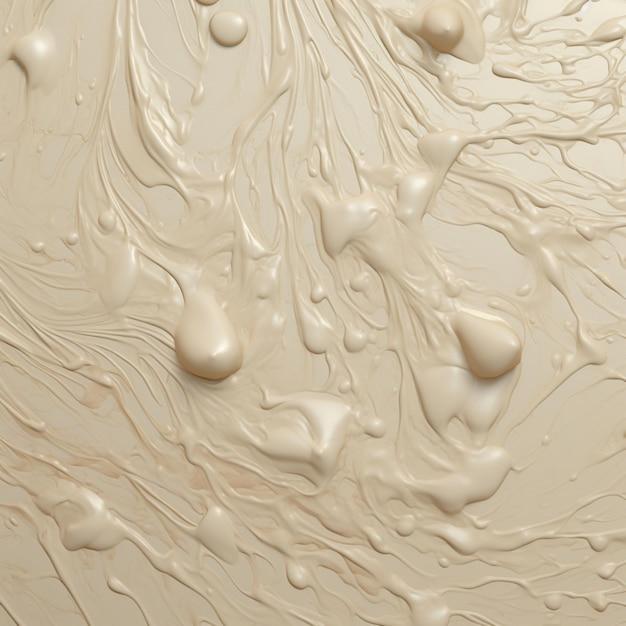Plaster of Paris, a common material used in various crafts and repairs, may have left you wondering about its behavior when exposed to water. Can it dissolve, or is it resistant to water? In this comprehensive guide, we’ll dive deep into the world of plaster of Paris and explore its relationship with water.
We’ll answer questions like “Can plaster of Paris dissolve in water?” and “What happens when plaster of Paris gets wet?” We’ll also shed light on related topics such as the strength, durability, and reactions of plaster of Paris with different substances. So if you’ve ever worked with plaster of Paris or simply want to satisfy your curiosity, keep reading!
Title: Does Plaster Of Paris Dissolve In Water: The Complete Guide
Does Plaster of Paris Dissolve in Water
Have you ever wondered if plaster of Paris dissolves in water? Well, buckle up and get ready for some plaster-related knowledge because we’re about to dive into the fascinating world of this versatile material and its relationship with H2O.
The Basics of Plaster of Paris
Plaster of Paris is a well-known material used in a variety of applications, from art and crafts to construction and medical use. It’s made by heating gypsum, a naturally occurring mineral, to around 150 degrees Celsius, which removes the water molecules bound within it. This process, known as calcination, results in a fine white powder that we call plaster of Paris.
Understanding the Chemical Reaction
Now, let’s get scientific! When plaster of Paris is mixed with water, it undergoes a chemical reaction called hydration. During hydration, the water molecules are reabsorbed by the plaster powder, causing it to harden and form a solid structure. This is due to the formation of interlocking crystals within the material, creating a durable and stable substance.
The Myth of Dissolution
So, does plaster of Paris dissolve in water? The answer is a resounding “no!” Contrary to popular belief, plaster of Paris does not simply dissolve in water like a sugar cube in tea. Instead, it chemically reacts with the water to create a solid mass. Imagine a superhero transforming from a powdery form to a rock-solid figure – that’s the kind of transformation happening when plaster of Paris meets water!
Importance of Water-to-Plaster Ratio
When working with plaster of Paris, it’s essential to get the water-to-plaster ratio just right. Too much water will result in a weak and crumbly mixture, while too little water will make the plaster hard to work with. It’s all about finding that Goldilocks zone where the mixture is just perfect – not too runny, not too stiff, but just right!
Fun Fact: Ancient Origins
Now here’s a fascinating historical tidbit for you: plaster of Paris has been used for thousands of years! The ancient Egyptians were the early pioneers in using plaster for sculpting and decoration purposes. They even used a primitive form of plaster of Paris to create lifelike masks for mummies. Talk about making a lasting impression!
Recasting the Myth
So, the next time someone asks you if plaster of Paris dissolves in water, you can confidently clear up the misconception. Remind them that this magical material undergoes a transformative chemical reaction with water, creating a solid structure that is anything but soluble. Plaster of Paris may seem like a humble substance, but it has stood the test of time and continues to be a valuable resource in various industries.
Now you’re armed with the knowledge to impress your friends at a party or become the superstar of arts and crafts. So go forth and marvel at the wonders of plaster of Paris, knowing that it won’t dissolve in water, but instead, create something remarkable!
FAQ: Does Plaster of Paris Dissolve in Water
Plaster of Paris is a versatile material commonly used for crafting, art projects, and even construction purposes. But does it dissolve in water? In this FAQ-style guide, we’ll tackle various questions surrounding the solubility, strength, and other properties of plaster of Paris. So, let’s dive in and discover the answers!
How Hard is Plaster of Paris
Plaster of Paris is not as hard as some other construction materials, but it still provides a decent level of hardness. When fully dried, it can achieve a hardness similar to gypsum, which is commonly used in drywall.
Does Baking Soda Dissolve Plaster of Paris
No, baking soda does not dissolve plaster of Paris. However, it can react with plaster of Paris in the presence of water or moisture, causing the mixture to expand and potentially crumble.
What is Stronger Than Plaster of Paris
There are several materials that are stronger than plaster of Paris. Some viable alternatives include cement, concrete, and fiberglass reinforced plaster. These materials offer enhanced durability and strength for more demanding applications.
What is Plaster of Paris
Plaster of Paris, also known as calcium sulfate hemihydrate, is a white powdery substance derived from gypsum. When mixed with water, it forms a paste that hardens into a solid material. It is widely used in art, construction, and medical applications.
Does Pop Ganpati Melt in Water
Pop Ganpati, or Plaster of Paris Ganpati idols, are often immersed in water during traditional rituals. While plaster of Paris does not completely dissolve in water, it can partially disintegrate over time, resulting in environmental pollution. It is advisable to opt for eco-friendly alternatives for Ganpati idols.
How Do You Dissolve a Plaster of Paris Idol at Home
To dissolve a plaster of Paris idol at home, you can submerge it in a container filled with water for an extended period. Over time, the water will gradually weaken the idol, making it easier to break down. Remember to dispose of the dissolved plaster of Paris responsibly.
Does Plaster of Paris React with Vinegar
Yes, plaster of Paris can react with vinegar. When vinegar comes into contact with plaster of Paris, a chemical reaction occurs, releasing carbon dioxide gas. This reaction can cause the plaster of Paris to expand and may result in a crumbly texture.
What Dissolves Plaster of Paris
While water alone may not completely dissolve plaster of Paris, it can soften and break down the material over time. However, for a faster dissolution process, you can add a small amount of vinegar to the water. The acidic nature of vinegar helps accelerate the breakdown of plaster of Paris.
Does Pop Ganpati Dissolve in Water
Pop Ganpati, made of plaster of Paris, does not entirely dissolve in water. However, it gradually disintegrates over time, causing environmental harm. To ensure sustainability, consider using eco-friendly materials for Ganpati idols that are designed to dissolve easily in water.
Does Plaster of Paris Break Easily
Plaster of Paris is relatively brittle and can be prone to breaking if mishandled or subjected to excessive force. It is a delicate material that should be handled with care, especially when it is in its dried and hardened state.
How Do You Dissolve Plaster of Paris Idols in Water
To dissolve plaster of Paris idols in water, place them in a container filled with water. Allow the idols to soak for a prolonged period, ensuring that they are fully submerged. Over time, the water will weaken and dissolve the plaster of Paris idol, facilitating disposal.
Does Plaster of Paris Go Bad
Like other materials, plaster of Paris does have a shelf life. Over time, exposure to moisture can cause it to harden and become less effective. Therefore, it is best to store plaster of Paris in a dry and airtight container to prolong its usability.
Can Plaster Go Down the Sink
No, you should avoid pouring plaster down the sink or any drains. Plaster can harden when exposed to water, potentially causing clogs and damage to the plumbing system. Dispose of the plaster waste responsibly by following local regulations or guidelines.
Does Plaster of Paris Wash Off
While wet plaster of Paris can be washed off easily with water, dried plaster of Paris is more challenging to remove. It may require scraping or sanding to eliminate stubborn residue. It is advisable to clean up wet plaster of Paris immediately to prevent it from hardening.
Is Plaster of Paris Biodegradable
No, plaster of Paris is not biodegradable. It is a non-renewable material derived from gypsum, which does not naturally break down over time. To minimize environmental impact, it is important to consider eco-friendly alternatives for temporary or disposable applications.
How Do You Dissolve Plaster of Paris
To dissolve plaster of Paris, you can immerse it in water and allow it to soak for an extended period. The water slowly weakens the plaster of Paris, causing it to break down. Adding a small amount of vinegar to the water can speed up the dissolution process.
Does Plaster of Paris Shrink When It Dries
Yes, plaster of Paris undergoes a slight shrinkage as it dries. This characteristic allows it to harden into a solid form and maintain intricate details. However, excessive shrinkage can lead to cracking and structural instability if not properly accounted for during the drying process.
Can You Add Plaster of Paris to Paint
Yes, you can mix plaster of Paris with paint to create interesting textures. By adding small amounts of plaster of Paris to paint, you can achieve a thicker consistency and create textured effects on surfaces such as walls or canvases. Get creative and explore different ratios to achieve the desired texture.
Can You Seal Plaster of Paris
Yes, you can seal plaster of Paris using various sealants or finishes. Once the plaster of Paris has fully dried, you can apply a clear coat or paint to protect the surface and enhance its durability. Make sure to choose a sealant suitable for the intended application.
What Happens When Plaster of Paris Gets Wet
When plaster of Paris gets wet, it gradually softens and can break down or crumble over time. This property makes it possible to dissolve or mold the material. However, excessive exposure to moisture may cause the plaster of Paris to lose its structural integrity or develop mold if not properly dried.
How Do You Get Plaster of Paris Off Your Hands
To remove plaster of Paris from your hands, start by rinsing them with warm water. Gently scrub your hands with soap, paying attention to the areas with plaster residue. If the plaster is stubborn, you can use a scrub brush or an exfoliating glove. Remember to moisturize your hands afterward to prevent drying.
How Can I Make Plaster of Paris Dry Faster
To speed up the drying process of plaster of Paris, there are a few techniques you can try. First, ensure proper ventilation to allow air circulation, which aids in evaporation. You can also use a fan or a dehumidifier to reduce moisture in the surrounding environment. Additionally, applying heat with a hairdryer or heat lamp can accelerate the drying time. However, exercise caution to avoid cracking due to rapid moisture evaporation.
Plaster of Paris, while not entirely soluble in water, can undergo changes when exposed to moisture. Its unique properties make it a popular choice for various applications, from art to construction. Remember to handle plaster of Paris with care, explore eco-friendly alternatives, and dispose of it responsibly. If you have any more questions regarding plaster of Paris, feel free to reach out and satisfy your curiosity!

